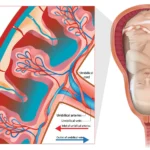There are many pregnant women who experience cramping and spotting in their first trimesters. In fact, one out of four pregnant women experience some kind of bleeding. These are considered the signs of early pregnancy very often and there can be nothing to actually worry about them. However, they can even be signs of a miscarriage. Therefore, it is necessary to monitor 1 month pregnant spotting and cramping clearly and closely and get medical help if they occur.
What are the Causes of Spotting and Cramping in the First Trimester of Pregnancy?
Spotting in early pregnancy might be the cause of implantation. When the fertilized egg implants in the womb lining a woman experience some light bleeding and cramping pain. Bleeding from the cervix is quite common because of increased blood flow. Cramping is any kind of abdominal spasm of the back or the front muscles. This can be painful and uncomfortable. Cramps are generally bearable and irregular. However, if they are ongoing and sharp then they might be taken as a sign of something more serious.

What are the Associated Risks?
Miscarriage, molar pregnancy, and ectopic pregnancy might be the risks associated with spotting and cramping in the first trimester of pregnancy. Ectopic pregnancy is when pregnancy takes place outside the womb-like in the fallopian tube. Rare and abnormal growth of the placenta is called molar pregnancy. Most of the times, the causes of spotting and cramping are unknown, but the pregnancy continues and women deliver healthily.






